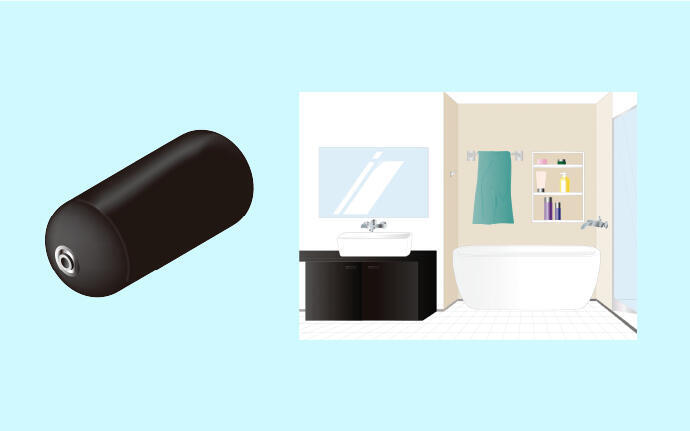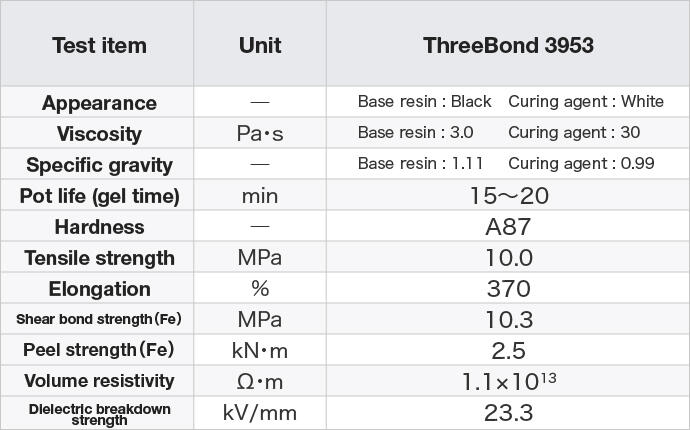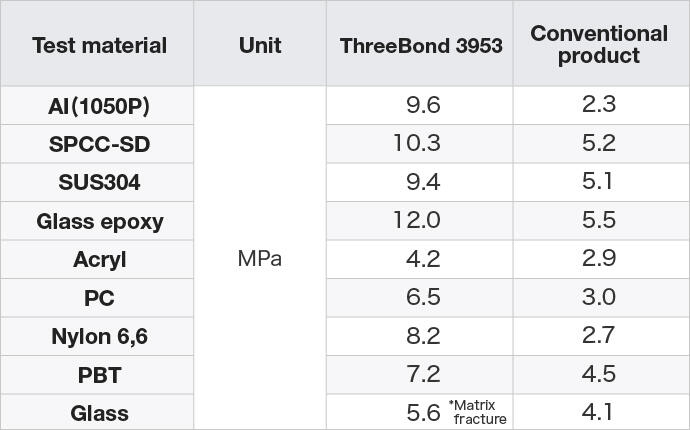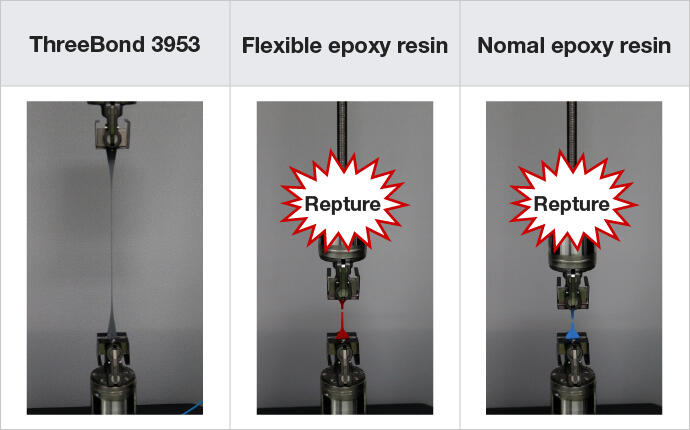Room temperature curing adhesive with strong elasticity achieving both excellent elongation and bonding strength
This is a room temperature curing two-component elastic adhesive that does not require a heat source for curing, thereby contributing to the SDGs. High strength bonding is possible without heating. It is ideal for bonding large workpieces that are difficult to heat or workpieces for which dimensional changes due to heat are not desirable. It is resistant to vibration and impact and has excellent stress relaxation due to expansion and contraction of members.
Features
- Good adhesion to a wide range of materials such as metals, plastics, wood, and inorganic materials.
- Does not require light or heat curing equipment and can be used in a variety of situations both indoors and outdoors.
- Type of elastic adhesive with higher strength and elongation compared to other elastic adhesives that becomes a rubber-like ferroelastic body after curing.
- Complies with laws and regulations of major countries around the world.
- Does not contain organotin compounds and complies with the European REACH regulation.
Uses
- Fixing of motor magnets
- Fixing of battery cells
- Valve seal of hydrogen tank
- Fixing of ceramic products such as bathtubs and sinks


Development points
ThreeBond 3953 is a non-solvent, two-component elastic adhesive curable at room temperature. This is a strong two-component elastic adhesive in which the main components are epoxy resin and a silyl-based special polymer, and curing is achieved at room temperature by mixing the two components and causing the epoxy resin to react with an amine compound and the silyl-based special polymer to react with the trace moisture in the air. In addition, taking full advantage of the features of a two-component adhesive, it has high adhesion to various materials, and has succeeded in achieving high strength and high elongation characteristics that are difficult to achieve simultaneously.
Properties and general characteristics


Adhesiveness by material

It shows good adhesion to a wide range of materials such as metals, plastics, and rubber, and can be used in various applications regardless of the material to be bonded.
Tensile test

In addition to its high bonding strength, it is high stretching with an elongation of 370%, allowing relaxation of the expansion strain caused by different materials (adherends) and also exhibits good conformability to vibration. Another unique property is the small reduction in elongation in the low temperature (-40°C) range. It has an overwhelming advantage compared to the elongation rate of flexible epoxy resin that has similarly high bonding strength.

